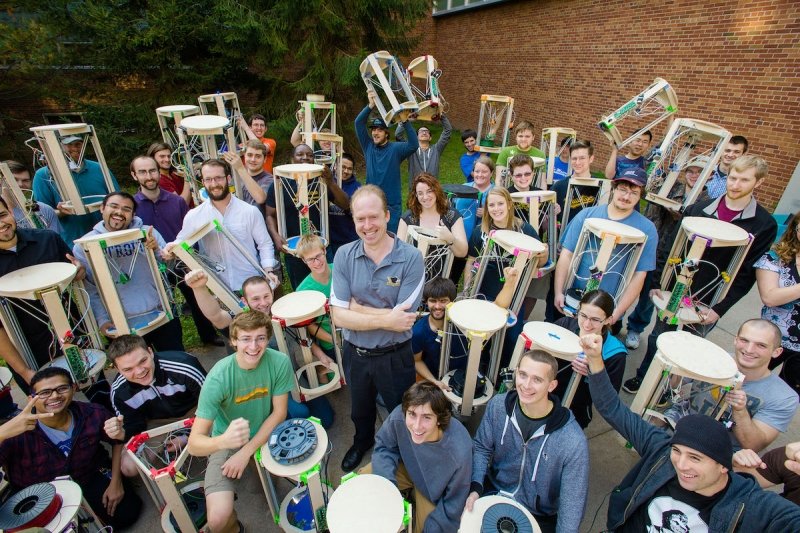Engineer Johusa Pearce from Michigan Technological University says communities are stronger, more innovative and better able to rise to challenges when we leverage our evolutionary advantage to cooperate, freely sharing ideas, projects and prototypes. In his how-to book, Create, Share, and Save Money Using Open Source Projects published this fall by McGraw Hill, Pearce offers hundreds of ways to give and receive, from uploading photos to the digital commons and participating in audiobook projects to widen the world’s library to building crowdsourced vehicles. And he introduces readers to two worldwide communities: makers and open source.
For years, the Michigan Technological University professor and researcher has been sharing open source principles and practices to help scientists in the world research community save millions of dollars. His audience and co-creators number in the thousands throughout the scientific, open source and maker communities. His latest book is different from the more scholarly publications that precede it. Pearce specifically wrote for a broad audience. Create, Share, and Save Money Using Open Source Projects is particularly geared toward families, teachers and students,but Pearce hopes it will inspire anyone who’s curious about the A-to-Z potential of making things and using no-cost open-source venues to distribute them. Never heard of RepRap (Self Replicating Rapid prototyper that started low-cost 3D printing) or CNC milling (a computer numerical control process that precisely fabricates objects)? And if everything’s free, what’s in it for me? Don’t be daunted, says Pearce. It’s all explainable—starting with something just about everybody is familiar with: the Golden Rule.
Treat others as you would want to be treated, a form of which exists across the majority of world cultures, is embodied in both the maker and open-source communities. Makers are the ultimate Do It Yourselfers. The philosophy is a modern iteration of something folks everywhere have been doing for a long time: making things they need or want out of necessity, for pleasure or both. Makers are also do-gooders, passing along knowledge, pro tips and tricks of whatever their trade is, knitting to furniture-making, on a multicultural, multigenerational basis. Traditions are preserved, recipes are replicated or modified and creativity is expanded. Thanks to technological tools, the maker movement, as it’s called, is finding an even firmer foothold in the world. It’s closely allied with the open-source philosophy.
Open source simply means technology where the plans, templates or programs you need for a project, whether that’s computer software or a clothing pattern, are readily available and you are free to do with them as you please (as long as you share your improvements with the community). Accessing the tools and the plans isn’t difficult. Neither is finding materials—some of it is stuff you were planning to throw out. You just have to know where to look. That’s where the book and its numerous resource links come in.
Pearce, whose research focuses on open-source appropriate technology for sustainability and poverty reduction solutions, has seen the benefits of the approach.
“Our wealth grows collectively,” Pearce says. “We all have the opportunity to radically reduce the cost of just about everything, from toys and electronics to kitchenware and clothing,” That’s because 3D printers and similar tools allow people to make complex, valuable products for themselves.
“You can easily customize the products to fit your exact needs,” he said. “There are already millions of free designs.”
This is real world wealth for everyone.
The importance of this approach was highlighted during the pandemic. Some of those free designs, including cloth masks, personal protective equipment (PPE) and emergency ventilators have been crucial when supply chains broke down. The desperately needed supplies and equipment that the open-source and maker communities were able to get to market under tight timelines illustrate how the movement benefits the greater good.
Read the full feature on Michigan Tech News.
